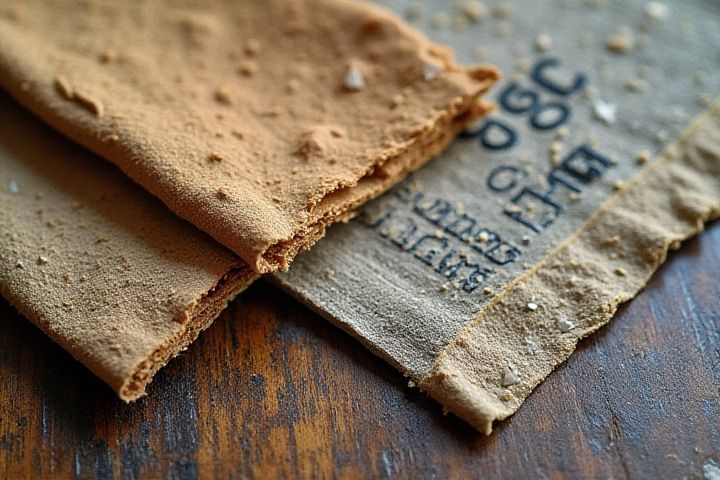
Durable house materials include brick, concrete, metal, and fiber cement, each known for its longevity and low maintenance. Brick provides excellent insulation and is resistant to fire and pests, making it a popular choice for energy-efficient homes. Concrete, often used in foundations and walls, boasts high compressive strength and withstands harsh weather conditions. Metal roofing and siding resist corrosion and offer superior durability compared to traditional materials, making them ideal for various climates. If you're considering building or renovating, investing in these long-lasting materials can enhance your home's durability and overall value.
What House Materials Last
Brick
Brick is a durable building material known for its longevity, often exceeding 100 years when properly maintained. The thermal mass of brick helps regulate indoor temperatures, potentially reducing energy costs by up to 25% due to its insulation properties. In terms of fire resistance, brick can withstand extremely high temperatures, providing an added layer of safety to your home. With a variety of colors and textures available, brick can also enhance the aesthetic appeal and resale value of your property.
Stone
Stone is a highly durable building material, capable of withstanding the elements for centuries. Granite and limestone are among the most popular choices, known for their resistance to wear and environmental degradation. Many historical structures, like the Pyramids of Giza, showcase stone's longevity, with some dating back over 4,500 years. Incorporating stone into your home can provide not just aesthetic appeal but also exceptional thermal mass, contributing to energy efficiency by regulating indoor temperatures.
Concrete
Concrete is a durable and strong material widely used in construction, known for its ability to withstand extreme weather conditions and heavy loads. Its resistance to fire, pests, and rot makes it a long-lasting choice for structural elements such as foundations, walls, and flooring. You can enhance concrete's longevity and aesthetics by integrating additives or using decorative finishes, such as stamped patterns or colored stains. Furthermore, the versatility of concrete allows for various applications, from residential to commercial buildings, ensuring it remains a favored material in modern architecture.
Steel
Steel is a prominent choice in construction due to its exceptional strength-to-weight ratio and durability, often lasting over 50 years with minimal maintenance. Its resistance to termites, rot, and fire makes it an ideal material for various climates, ensuring long-term safety and structural integrity. Steel structures are also highly recyclable, contributing to sustainable building practices and reducing environmental impact. When using steel, consider that it can withstand extreme weather conditions, making it suitable for areas prone to hurricanes or earthquakes.
Fiber Cement
Fiber cement is a highly durable material, composed of a mixture of cellulose fibers, cement, and sand, providing a lifespan that often exceeds 50 years. This weather-resistant building material is designed to withstand harsh climates, resisting rot, fire, and termites, making it ideal for various applications, from siding to roofing. With its minimal maintenance requirements, homeowners can expect reduced costs over time, as well as enhanced energy efficiency. You can also choose from a variety of textures and finishes, ensuring that the aesthetic appeal of your home is never compromised.
Engineered Wood
Engineered wood is a versatile and durable building material, consisting of layers of wood veneers or strands that are glued together to enhance strength and stability. This type of wood can resist warping and splitting, making it an excellent choice for flooring, cabinetry, and structural components. When exposed to various environmental factors, engineered wood can last up to 30 years or more with proper maintenance. You can leverage engineered wood's eco-friendly properties, as it often uses faster-growing tree species, promoting sustainable forestry practices.
Vinyl Siding
Vinyl siding, composed of polyvinyl chloride (PVC), is a highly durable exterior material for homes, boasting a lifespan of 20 to 40 years with proper maintenance. It is resistant to rot, pests, and harsh weather, making it a popular choice in various climates. Potential energy savings from vinyl siding can be enhanced with insulation, improving your home's overall energy efficiency. With a wide range of colors and styles available, you can easily customize the appearance of your home while benefiting from low maintenance requirements.
Glass
Glass is increasingly favored in modern architecture for its strength, versatility, and aesthetic appeal. Tempered glass, which is five to six times stronger than standard glass, is often utilized in windows and facades due to its durability and safety features, shattering into small, blunt pieces when broken. Low-emissivity (Low-E) glass can significantly enhance energy efficiency by reflecting heat back into the home, thus reducing heating and cooling costs by up to 30%. Laminated glass, composed of two layers with a middle interlayer, offers superior sound insulation and enhanced security, making it an excellent option for urban environments.
Aluminum
Aluminum is a highly durable and versatile material often used in modern house construction. Due to its resistance to corrosion, aluminum siding can last up to 40 years with minimal maintenance. When compared to traditional materials like wood or vinyl, aluminum offers superior strength and thermal efficiency, making it an excellent choice for energy-efficient homes. You can expect aluminum window frames to enhance your home's aesthetic appeal while providing insulation benefits, often lasting 20 years or more without significant wear.
Stucco
Stucco, a durable and versatile exterior finish, typically consists of a mixture of sand, water, lime, and cement. With a lifespan of up to 50 years when properly maintained, it offers excellent resistance to harsh weather conditions, fire, and pests. The application process involves multiple layers, including a base coat and a finish coat, providing not only aesthetic flexibility but also superior insulation properties. You can enhance the longevity of stucco by ensuring proper drainage and periodic maintenance, which can significantly extend its durability and appeal.
